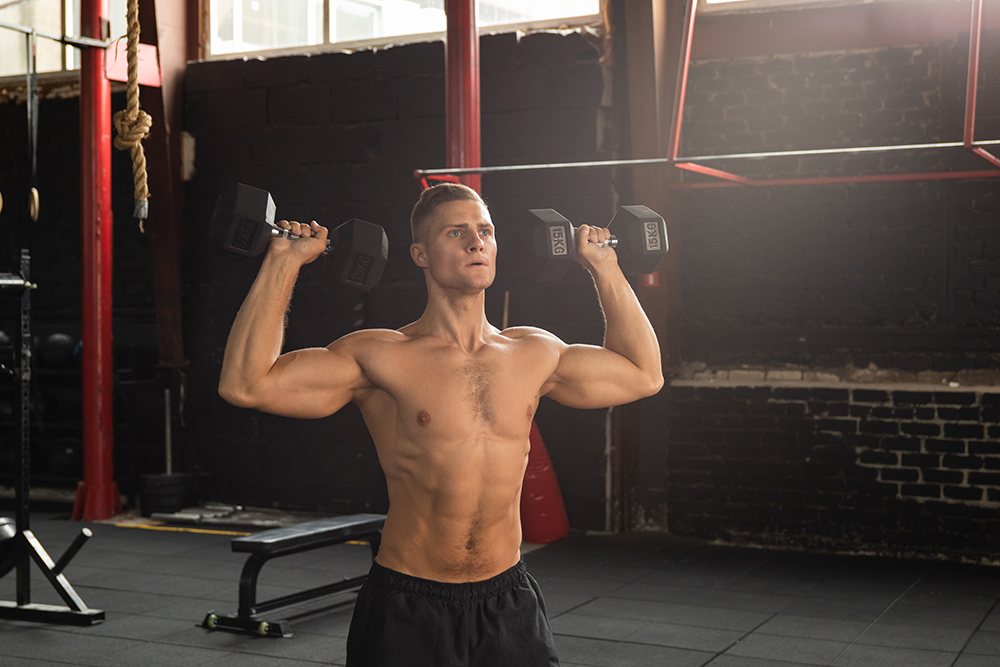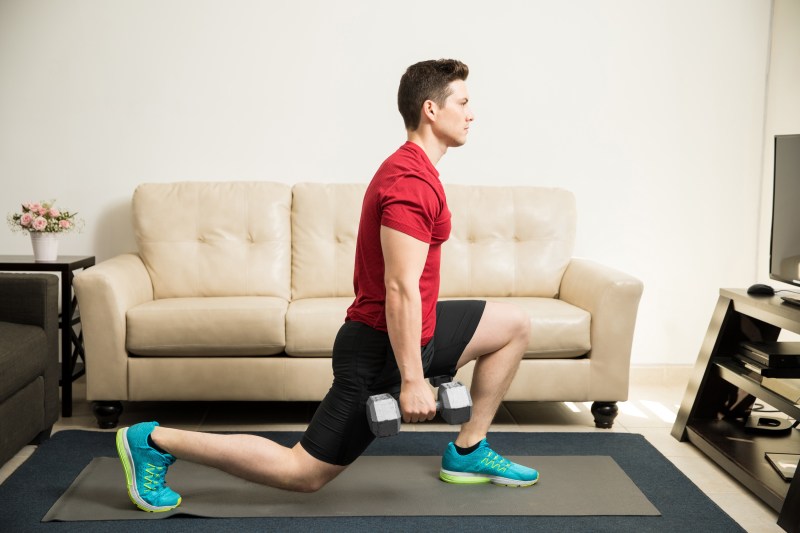Looking for a new workout plan? Or just starting out? The bro split workout plan might be just what you need.
This popular regimen, favored by many fitness enthusiasts, focuses on one major muscle group per workout. It’s not just new and trendy — it’s an effective workout strategy, allowing you to rest each muscle group for an extended period between workouts.
What is it, and how does it work? Will it help you reach your goals? You’ll find all of the information you need in this article. Let’s get started!
What is bro split workout?

A bro split workout is a training routine that targets one specific muscle group per workout session — one for each day of the week. This allows each muscle group to have a full week of recovery before being worked again. It also allows for a day or two with no workout at all, which is important for recovery.
It’s called the “bro split” because it’s popular with some gym influencers, who are often called “gym bros.” If you don’t consider yourself a gym bro, don’t let that discourage you! This workout is for everyone.
Is bro split enough to build muscle?

Yes, a bro split can be effective for building muscle, especially for beginners or those with limited time. Like any workout plan, it requires dedication and consistency to see significant results, but it can be a useful guide to help you start a routine.
Which is better, PPL or bro split?

Both PPL (push, pull, legs) and bro split have their advantages. PPL gives you more frequency per muscle group, but bro split allows for more recovery time, which can benefit muscle growth. Bro split workouts can also engage each muscle group more efficiently and thoroughly.
Either system is a good choice and can be useful on your journey. You can try both to see what works for you, but keep in mind that bro splits are optimal for beginners because they offer both more recovery time and a better organizational system.
Who is the bro split workout plan best for?

Anyone can try the bro split workout plan, but whether you like it depends on what you’re looking for. It’s best for individuals who prefer focusing on one muscle group per session and those who require more recovery time. It’s also great for those with limited time to work out during the week. Anyone can try it, but whether you enjoy it will determine how consistent you can be with it.
The optimal bro split workout plan for gaining strength

Monday: Chest
The chest is a large muscle group that requires significant energy to work out. Starting the week with chest exercises ensures you’re fresh and can maximize your effort.
- Bench press: 4 sets x 8-10 reps
- Incline dumbbell press: 4 sets x 8-10 reps
- Cable crossovers: 3 sets x 12 reps
- Push-ups: 3 sets x 15 reps
- Dumbbell flyes: 3 sets x 12 reps
- Chest dips: 3 sets x 10 reps
Tuesday: Back
Training the back after the chest helps maintain a balanced physique. It also complements chest workouts by targeting opposing muscles, promoting balanced muscle growth, and preventing injuries.
- Deadlift: 4 sets x 8-10 reps
- Bent over rows: 4 sets x 8-10 reps
- Lat pulldowns: 3 sets x 12 reps
- Seated cable rows: 3 sets x 12 reps
- Pull-ups: 3 sets x 10 reps
- T-bar rows: 3 sets x 12 reps
Wednesday: Rest
After two days of intense workouts, your body needs time to recover. Rest days are crucial for muscle repair and growth.
Thursday: Shoulders
Shoulders are involved in many upper body movements. Doing shoulder workouts after a rest day ensures they’re well-rested and can handle the workload.
- Military press: 4 sets x 8-10 reps
- Lateral raises: 4 sets x 12 reps
- Front raises: 3 sets x 12 reps
- Rear delt flyes: 3 sets x 12 reps
- Dumbbell shoulder press: 3 sets x 10 reps
- Upright rows: 3 sets x 12 reps
Friday: Legs
Legs contain some of the largest muscles in the body. Putting your leg workouts towards the end of the week ensures you have enough energy to perform these demanding exercises.
- Squats: 4 sets x 8-10 reps
- Leg press: 4 sets x 8-10 reps
- Leg curls: 3 sets x 12 reps
- Calf raises: 3 sets x 15 reps
- Lunges: 3 sets x 10 reps
- Leg extensions: 3 sets x 12 reps
Saturday: Arms
Arm day is separate from the chest and back days since many chest and back exercises involve your arms as well. By training your arms separately, you ensure they’re not overworked during the week.
- Bicep curls: 4 sets x 8-10 reps
- Tricep pushdowns: 4 sets x 8-10 reps
- Hammer curls: 3 sets x 12 reps
- Skull crushers: 3 sets x 12 reps
- Concentration curls: 3 sets x 10 reps
- Tricep dips: 3 sets x 12 reps
Sunday: Rest
Another rest day to allow your body to recover and prepare for the next week of workouts. Remember, muscle growth happens during rest, not just during workouts.
How to maximize results

Consistency
The most important factor in any workout routine is consistency. The bro split workout plan requires dedication and a commitment to each session. Missing workouts can significantly slow your progress. Make sure to schedule your workouts to fit your lifestyle and stick to it.
Nutrition
Your diet plays a crucial role in muscle building and recovery. Make sure you’re consuming a balanced diet rich in protein, carbohydrates, and healthy fats. Protein is especially important, as it is essential for muscle repair and growth. Consider consulting with a nutritionist or using a meal planning app to ensure you’re meeting your nutritional needs.
Rest and recovery
While it might be tempting to skip rest days, they’re essential for muscle recovery and growth. During rest days, your muscles repair themselves and grow stronger. Make sure to get plenty of sleep and consider incorporating active recovery activities, like stretching or light cardio, into your rest days.



